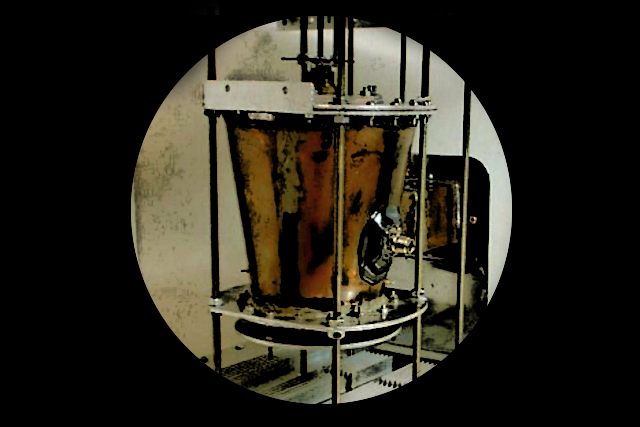Does it even produce thrust? | Photo: Mario Solera, CC0 (Public Domain)
***
Remember Robert Shawyer’s EMDrive? The cone-shaped thing that supposedly produces thrust without a propellant? I’ve talked about it before. Well, it’s still not confirmed to be doing anything other than just sitting there, but if it is producing a teeny-tiny amount of force, physicist and author of “Physics from the Edge” Mike McCullough may have an explanation.
Now, first I want you to bear in mind two things: (a) this is highly theoretical and way over my head, and (b) perhaps most importantly, none of this has been proven experimentally.
Long story short, from what I can tell McCullough works on explaining inertia (you know, a thing in motion wants to stay in motion, all other things being equal, and the same for being at rest) using a model he calls “Modified inertia by a Hubble-scale Casimir effect” or MiHsC. Another name for it is “quantised inertia.” He has a pretty decent explainer up on his blog, which for the non-physicist sounds, I don’t know, plausible I suppose? I’m not really the best person to argue with him. But this theory does do one thing that other physicists have been trying to do for a while: get rid of dark matter.
See, dark matter is a really convenient thing. The galaxies don’t move the way they should under the model for gravity we have. So we can either (a) assume the existence of missing mass (this is the by-far more favoured theory) or (b) assume we don’t understand gravity that well. Where I think the majority of scientists go with the “well, let’s find the invisible and largely unreactive matter” thing, McCullough is going the other way: adjusting gravity. You can read his explanation here.
Anyway, central to the model he’s suggesting is something called Unruh radiation, which would produce an unequal push on one side of an object when it moves, because the wavelengths of this radiation would “fit” better on the receding side of a moving object. McCullough describes it using the metaphor of a boat tied to a dock — waves make it stick to the dock side because only certain wavelengths can “fit” between the boat and the wall, whereas all the waves can fit on the seaward side.
And here’s where we come back to the EMDrive. According to a paper MCullough posted to arXiv.org earlier this month, the EMDrive could be producing force by leveraging this Unruh radiation. And conversely, it could at the same time be used to test the existence of Unruh radiation. He says that if the cone shape is adjusted in certain ways (to change the bias of the radiation) it should change the direction of the thrust, and also (according to MIT Technology Review) that if you add a dielectric to the inside of the cavity, it should enhance the thrust.
Because I love testable claims, I’m all for trying these out. But, again, the MIT Technology Review has some words of warning for those of you interested in getting your hopes up about a magical thrust-producing drive based on an as-yet unproven model of the universe:
You can read more at MIT Technology Review, arXiv.org, and of course Mike McCullough’s blog.
***
Thanks for reading! I only get paid in my own (and your) enthusiasm, so please like This Week In Tomorrow on Facebook, follow me on Twitter @TWITomorrow, and tell your friends about the site!
If you like our posts and want to support our site, please share it with others, on Facebook, Twitter, Reddit — anywhere you think people might want to read what we’ve written. Thanks so much for reading, and have a great week.
***
Richard Ford Burley is a human, writer, and doctoral candidate at Boston College, as well as an editor at Ledger, the first academic journal devoted to Bitcoin and other cryptocurrencies. In his spare time he writes about science, skepticism, feminism, and futurism here at This Week In Tomorrow.


One thought on “EMDrive Update: Unruh Radiation Edition | Vol. 3 / No. 25.4”
Comments are closed.